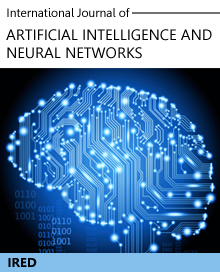Neurological Disorder Identification by Eye Movement Biometric using Machine Learning Schemes
Author(s) : ANAND TIWARI, B K TRIPATHI, V K PATHAK, VIVEK SRIVASTAVA
 Abstract
Abstract
In recent past [1]-[2], many neurological disorders diagnosed with the help of eye movement signals. Such type of disorders is reflected through the abnormalities of eye movements. This is why eye movement signals are being utilized for identification of such brain level abnormalities [6]-[11]. The key factor that is associated with such identification is the combined nature of human eye movement plant and brain stem control. For defense personnel, timely identification of neurological disorders plays crucial role in order to prevent the degree of such disorders from mild to severe as they have higher chance for repeated trauma. Further, eye movement biometric features extracted from eye movement signals are being used for such diagnosis due to its intrinsic discrimination properties and associated brain level activity [2]. In this paper, we investigated the mild traumatic brain injury (m-TBI) neurological disorder identification by eye movement biometric through intelligent machine learning schemes. Three different approaches have been involved in machine learning scheme: first is evolutionary fuzzy clustering [5], second is supervised neural network and third is the fusion of evolutionary fuzzy clustering with neural network viz. hybrid intelligent model [3]. We assessed the three comparative analyses of intelligent machine learning for m-TBI identification from eye movement signals. Velocity threshold identification algorithm is employed for fixation identification from raw eye movement signals. After that, m-TBI quantitative features are derived from obtained fixations and saccades. The m-TBI quantitative features (fixation count, fixation duration, vectorial saccade amplitude and fixation quantitative score) are generated. Based on the threshold, disorder is identified. The results obtained through our experiments over eye movement signals demonstrate the promising outcome for m-TBI diagnosis.
 Full Paper PDF
Full Paper PDF
